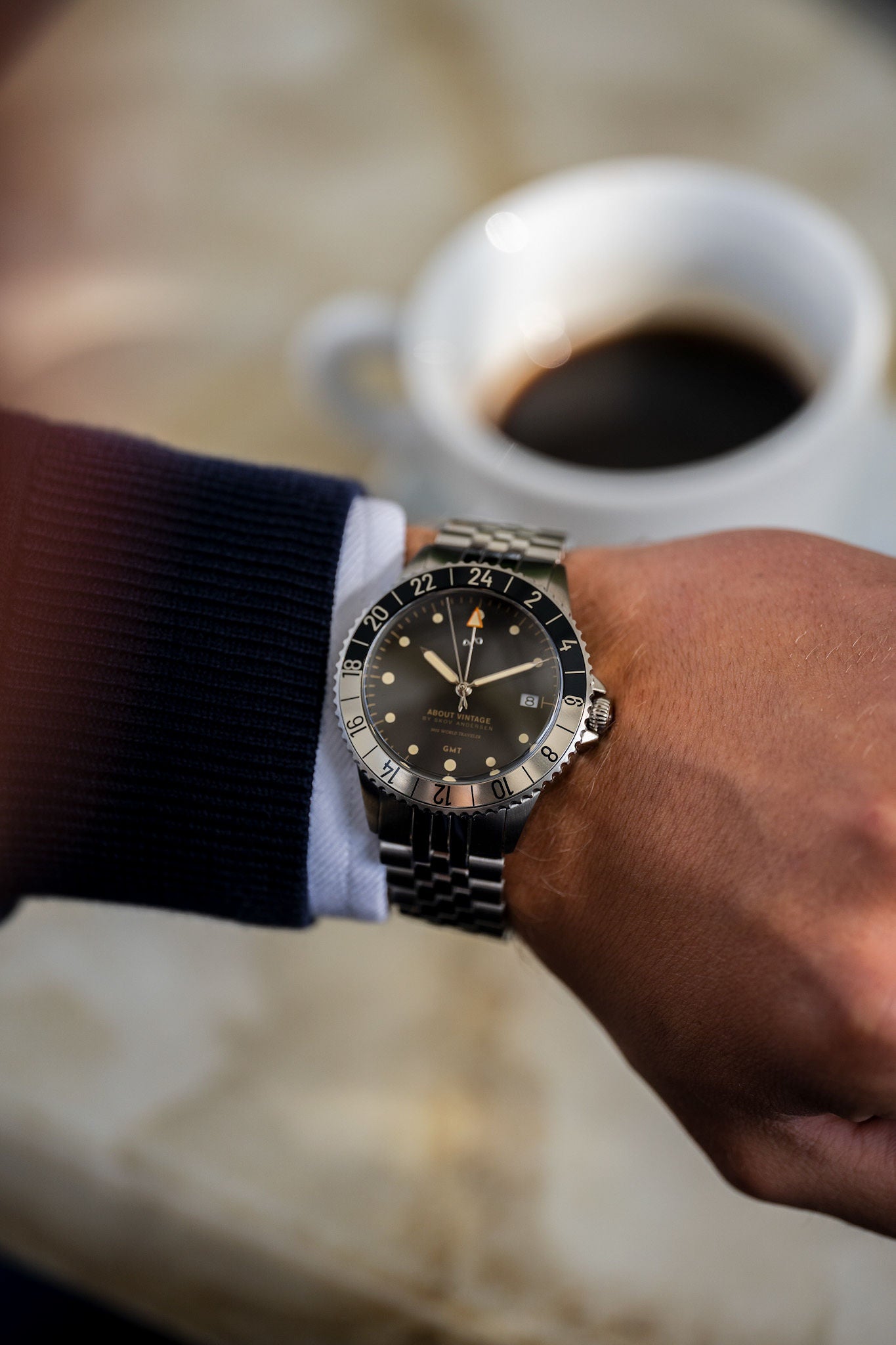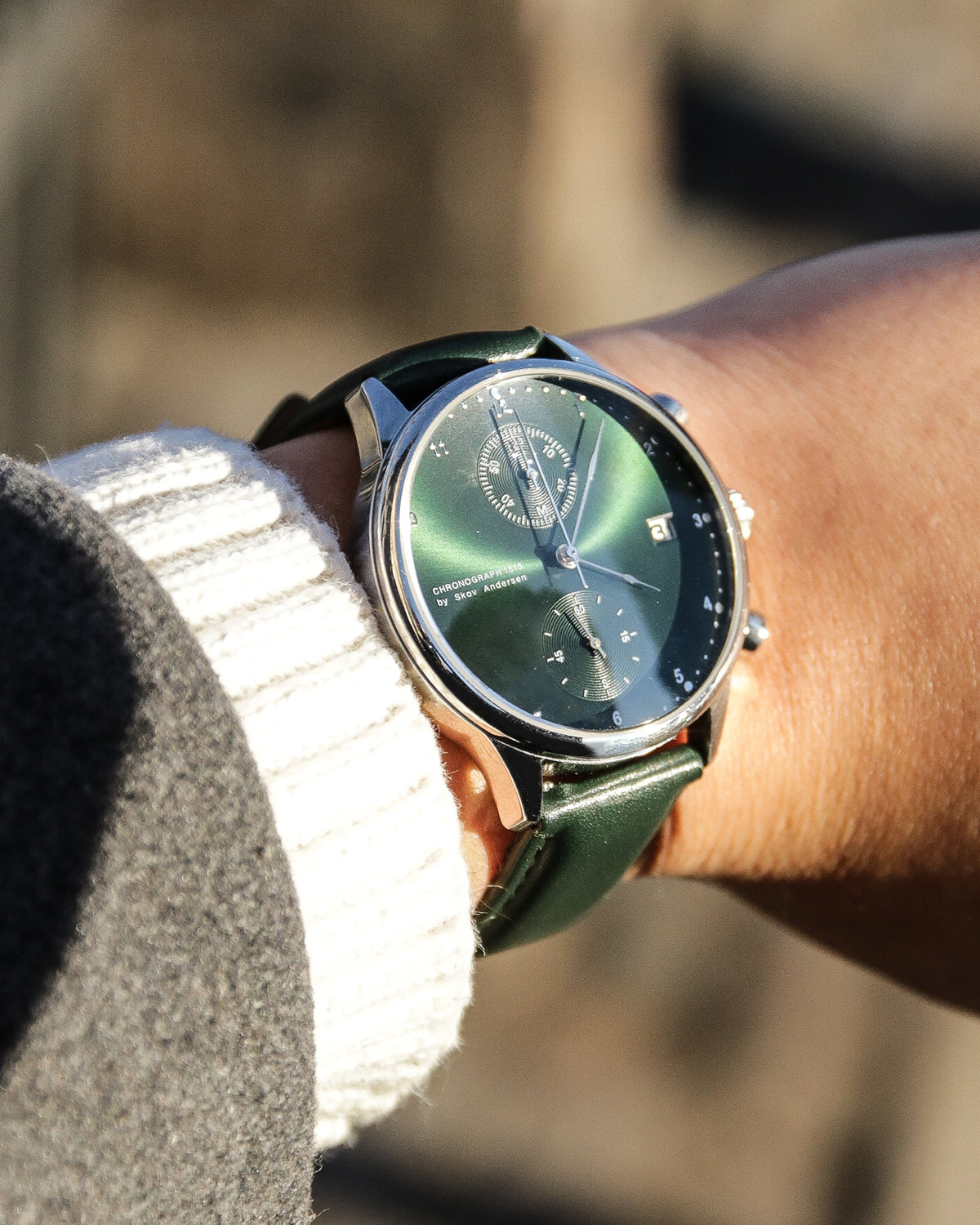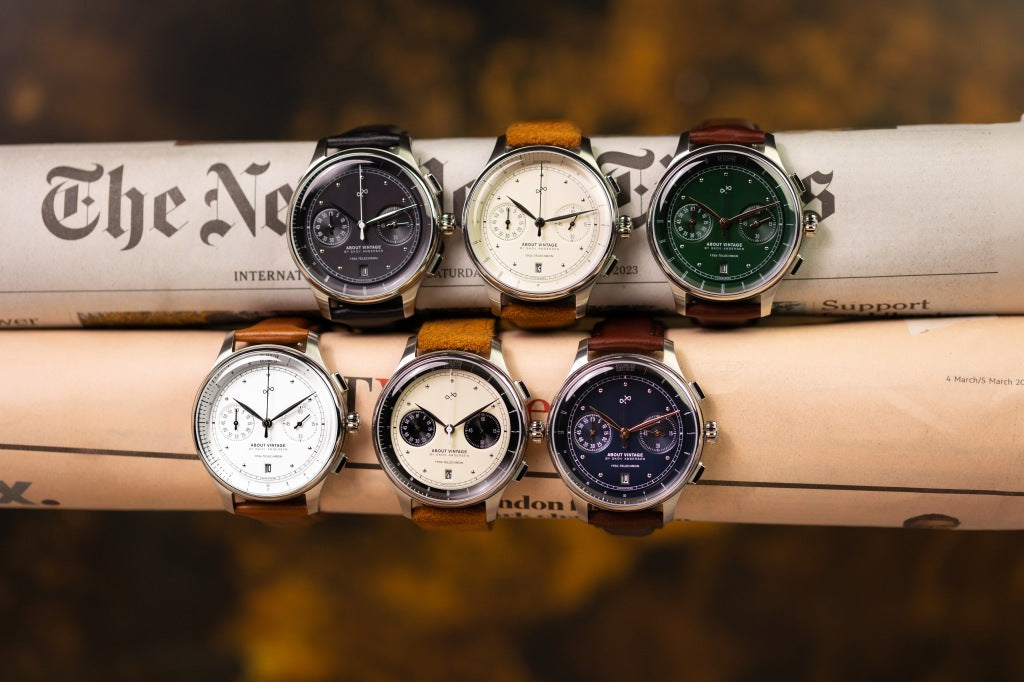
Our features
Hi there! We have got a lot of comments and questions about our watches over the years, and we want to share our thoughts and choices with our customers and followers. In this “long read” I would like to come up with some quality choices, and the specs of the movements we're using to create these masterpieces.
Our choice of quality glass
We always want to offer the best for our customers, therefore quality is a top priority every time we start new projects. Our watches are always made with sapphire crystal, which makes it almost scratch free.
Mohs scale it’s a scale which rates the relative hardness of materials, and sapphire crystal scores 9 out of 10 in this scale. Meaning only materials which score the same or higher on Mohs scale, can scratch your About Vintage watch.
Sapphire crystal is more reflective, compared to cheaper alternatives. Our sapphire crystal has an anti reflective coating, which makes the light more able to pass through the glass and makes the dial easier to read.
Many of our watches come with a domed glass which means, no corners you can scratch. The domed glass gives all the watches a vintage look, because of the distorted dial from certain angles. In the past many brands used plexiglass in their watches, which is very thick and was making the dials distorted too.
We also offer the regular flat sapphire crystal glass, on some of our GMT’s and the 1971 automatic etc.

A product with durability
We want to deliver a product that can stand by you the rest of your life, therefore we only use 316L stainless steel in our watches. 316L stainless steel is very durable, compared to typical watch materials such as stainless steel or aluminum. Our watches are resistant to rust and will not tarnish over time, and suddenly you will look older than your watch.
If you have sensitive skin, then an About Vintage watch is a perfect option for you. Not only is 316L stainless steel very durable, it's also a hypoallergenic material which is good for your health too.
We made a choice for our watches in precious metals, to coat them with ISO 9001 certified gold or rose gold, to keep the prices reasonable for you.
The hearts of our watches
At About Vintage we are striving to give our customers the true feeling of a quality watch, therefore we use many different movements depending on model and complication the watch has.
1954 GMT and 1982 GMT World Traveler

For our GMT watches the primary movement is Ronda 515-24H GMT, because it is a reliable quartz GMT movement. It has a monthly accuracy of -10/+20 seconds and a battery lifetime of 45 months. The Ronda 515 has 4 functions - hours, minutes, seconds, date and a second time zone.
1970 Haagen GMT

The other movement we use for our GMT watches is the Sellita SW330 GMT Automatic, and it’s only the 1970 Haagen GMT’s. This movement is a Swiss made and an automatic watch, with self-winding mechanical and a 42 hours power reserve. It's difficult to say how accurate this movement is, but it has a maximum deviation of 20 +/- seconds a day.
1926 At’sea, 1926 At’sea Vintage, 1971 Stagediver, 1964 Horizon

The movements that make our underwater watches go are two japanese movements, one quartz and one automatic. The quartz is a TMI VH31,and in my opinion one of the coolest quartz movements. The second hand is sweeping, which means that the hand ticks 4 times a second and makes it look like an automatic watch or just much smoother. It’s a classic no date and 3 handed movement that gives a vintage look i think. The battery lifetime is around 2 years and a very easy watch for you to wear on any occasion.
1926 At’sea Automatic

The other movement is for our automatic diver, and is a Miyota 8215 with 21 jewels and a power reserve of 42 hours. The standard deviation of this movement is -20/+40 seconds a day, and that helps remind you that you have an automatic watch on. Setting my watch is a natural thing for me, and I see it as a little cozy break from what I am doing.
If the movement should break, is the replacement price for a Miyota 8215 affordable compared to other automatic movements and it's around $40-50.
1969 Vintage

Now for the dressier stuff where we have 4 different movements in our assortment. Starting out with the 1969 Vintage which has a Ronda 763 quartz from Switzerland. The movement has 40 months battery life, and only a -10/+20 seconds devotion per month. Ronda 763 has a power saving feature, if you pull out the crown to setting position you’ll save 70% of the battery.
1969 Petite

Our 1969 Petite has another quartz movement called Miyota GL20 from Japan. This movement is the smallest one we are using, and the only reason for that is it has to fit a 32 mm case. The battery life time is 2-3 years and a battery shift will cost you $14-20, and you are good to go again.
1820 Automatic

The 2 automatic dress watches have 2 different movements, both 3 handed and with date.
The bestseller 1820 Automatic has a Japanese movement called NH35A with 24 jewels, and has the 3:00 date version. The movement comes in two date versions, where the date window is at 3:00 and 6:00. It has a 40 hours power reserve, with a -20/+40 seconds devotion a day.
1971 Automatic

Last but not least we have the popular 1971 Automatic, which is a Swiss made with a STP-11 movement. The STP-11 is a ETA 2824 clone, which means that this movement is based on the original ETA design. These designs were patented but eventually expired, therefore it's not a fake ETA but a clone.
The STP-11 has 26 jewels and a 44 hours power reserve, with a standard deviation of -20/+20 seconds a day. It's a familiar movement for every watchmaker, so getting it serviced will be easy.
1815 Chronograph, 1815 Justin Gatlin, 1844 Chronograph and 1992 Matchday Chronograph

The last category of timepieces we offer is the chronographs, where we primarily use the same movement, but 3 different versions of the same movement. They are called the Miyota 6S11, Miyota 6S20 and Miyota 6S21, they are all three quartz and only the number of dials and their placement on the dials is different. The sub dials are placed either vertical or horizontal on the dial with the 6S11 and 6S21. These Japanese movements are very accurate and there is only -20/+20 seconds a month devotion, with 3-4 years battery lifetime.
The 6S11 is used for 1815 and 1844, which has the vertical sub dial version with seconds and minutes.
1960 Racing Chronograph

The 6S20 has 3 sub dials and is used for our 1960 Racing Chronograph for more precise time measurement, since it can measure down to one twentieth of a second.
1934 Telechron

The 6S21 is used for the newest chronograph in the collection, called 1934 Telechron and has the 2 horizontal sub dials with seconds and minutes too.
1899 Rossonero Automatic

The second collaboration between About Vintage and AC Milan ended up with the 1899 Rossonero Automatic, where we are celebrating their 123 year anniversary. We made 3 colors of this model, which represent each of their 3 jerseys. For this watch we used a new automatic movement that was introduced in 2018 from Miyota and a part of their premium line.
It’s called Miyota 9039, and the 1899 Rossonero is the only model with this movement. The Miyota 9039 is a classic 3 handed display with no date, and has +42 hours power reserve when fully wound. Turn the crown 40 times then the watch should be fully wound and you're good to go. The accuracy of this timepiece should be -10+30 seconds a day, which is common for these automatic watches at this price point.




Leave a comment
This site is protected by hCaptcha and the hCaptcha Privacy Policy and Terms of Service apply.